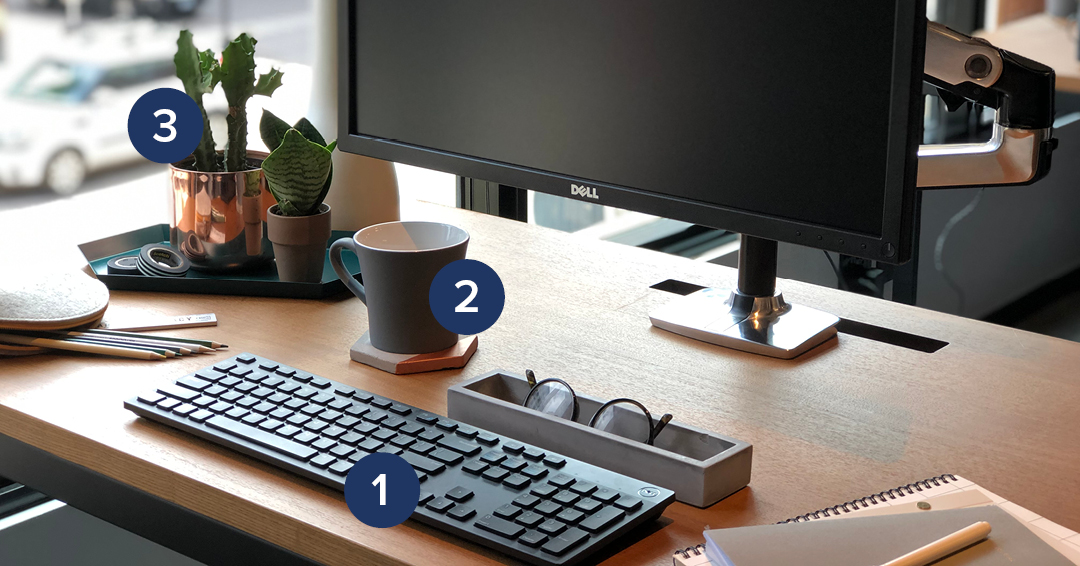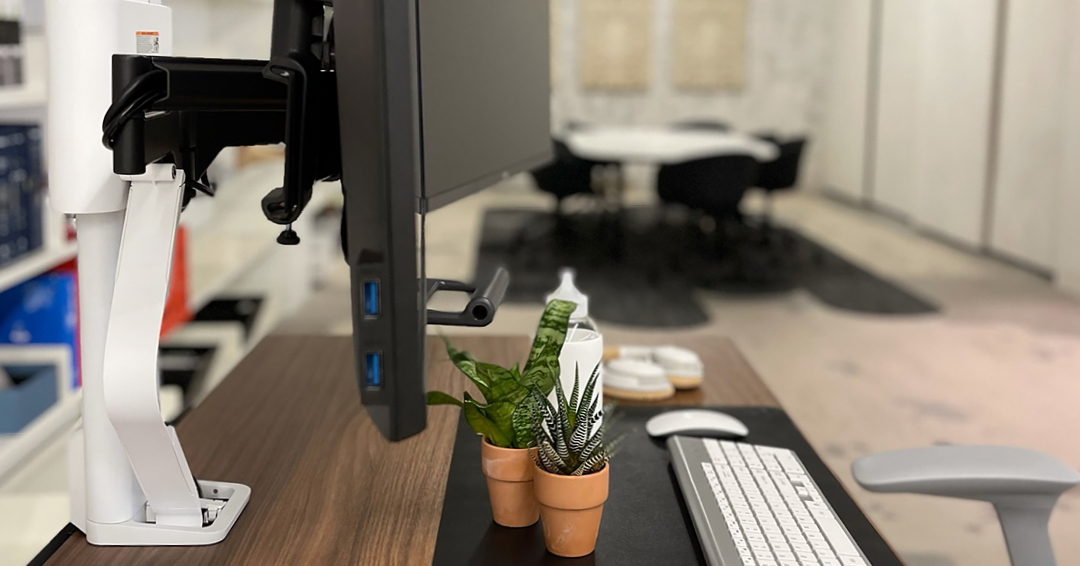With unprecedented levels of work flexibility, employees need to be more intentional than ever about how they set up their workspaces to support their comfort, health and productivity. Applying the ergonomic work zones can help employees strategically place equipment and supplies wherever they work to help reduce the risk of injury and set them up for success.
How to Apply the Ergonomic Work Zones

To get started, employees should ensure they’re working in a neutral posture to help reduce stress on the body while sitting or standing and help prevent chronic health conditions such as pervasive lower back pain.
 Neutral Posture While Standing
Neutral Posture While Standing
While standing, employees should have both feet flat on the floor and ideally use an anti-fatigue mat and comfortable shoes. Their legs should be straight and elbows should stay at a 90-degree angle. Wrists should rest comfortably at the keyboard, and their head should be centered between their shoulders.
Now employees can work to set up their individual workspaces following the ergonomic zones.
 Ergonomic Work Zone 1
Ergonomic Work Zone 1
Zone 1 is the primary work zone. Key work-related items should remain comfortably in reach so employees can maintain a neutral posture. By placing frequently used items in Zone 1, they can help reduce stress on the body and enhance productivity with easy access.
Popular Zone 1 items:
Laptop or computer monitor
Keyboard and mouse
Notepad
Pens
Ideal distance from the employee: 12-16 inches.
 Ergonomic Work Zone 2
Ergonomic Work Zone 2
Zone 2 includes items used less frequently than those in Zone 1. Horizontally across the employee’s desktop or vertically above the desktop, Zone 2 items should sit within reach with a minor arm extension.
Popular Zone 2 items:
Cell phone
Beverages
Reference material
Ideal distance from the employee: 8-12 inches vertically or 16 inches horizontally.
 Ergonomic Work Zone 3
Ergonomic Work Zone 3
Zone 3 includes items that employees need to rarely access and requires a significant reach that could lead to strain and injury, so employees should be thoughtful of what stays in this zone.
Popular Zone 3 items:
Lamps
Plants
Photo frames
Purses
Other items rarely needed during the day
Ideal distance from the employee: 28 inches.
Some workplaces have a fourth zone, which includes infrequently used documents and file cabinets that require employees to walk away from the workstation to access.
The Connection Between Ergonomic Work Zones and Productivity

Designing a workspace that enables peak performance incorporates the principles of cognitive ergonomics. Work environments designed with cognitive ergonomics in mind help support:
- Focus, memory, decision making and learning
- Work performance
- Less human error
- Cognitive processing
- Fewer disruptions, interruptions and information overload
A workspace created with ergonomic work zones is usually tidy and organized. When the items are thoughtfully arranged, there’s less visual clutter, which can enhance cognitive performance. When employees have an orderly desk and can quickly find the documents they need or essential tools, they’re more likely to have a productive workday.
The link between physical health and cognition remains. Pain is distracting and can lead to decreased focus on cognitive tasks. As a result, this can contribute to reduced productivity and increased errors.
Implement Your Own Ergonomic Work Zone Program
Implementing ergonomic work zones allows leaders to support the health, productivity and efficiency of their employees. To learn more about the benefits of the ergonomic work zones and how to successfully implement them in your organization, read the full white paper here.



